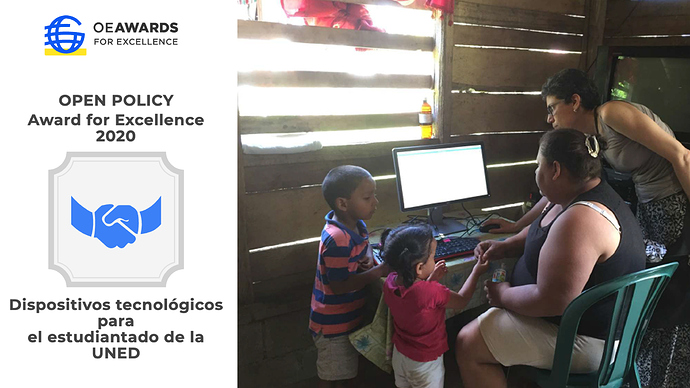Universidad Estatal a Distancia
San José, Costa Rica
The project “Technological Devices for UNED’s students”, emerged from the desire to provide the low-income population with devices that would support their students’ learning. This is a joint effort between the Fab Lab Kä Träre and the Student Affairs Division at UNED.
The use of tablets and open hardware were not alternatives being offered to the students of UNED. Based on a pilot project in this regard, it was determined that the student body could take advantage of these options allowing the institution to serve more people, with fewer resources.
The Rectory Council of UNED received the results of the research and took actions so that these technologies are now an integral part of the scholarships offered to their students. Encouraging future alternative technologies to be valued and introduced in all their potentiality.
This occurrence marked an important milestone in the university’s policies, allowing for open technologies to be considered and introduced in the offerings to students.
El proyecto Dispositivos tecnológicos para el estudiantado de la Universidad Estatal a Distancia (UNED), nació de la necesidad de dotar a la población, de más bajos recursos, de dispositivos para sus labores de estudio. Este proyecto fue un proyecto conjunto entre personas del Fab Lab Kä Träre y de la Dirección de Asuntos Estudiantiles.
El uso de tabletas y de hardware abierto es una opción que anteriormente no se había considerado como parte de las que la UNED podría poner a disposición de sus estudiantes. A partir de un proyecto piloto al respecto, se determinó que el estudiantado podría aprovechar esta opción y se podría atender a más personas, con menos recursos.
A partir de esto, el Consejo de Rectoría de la UNED recibió los resultados de la investigación y giró acciones para que se usen estas tecnologías como parte de la beca estudiantil y para que en el futuro se valoren tecnologías alternativas en todas sus potencialidades.
Esta incidencia en la política institucional marca un antes y un después en la universidad, de manera que ahora se consideren tecnologías abiertas para el estudiantado.



